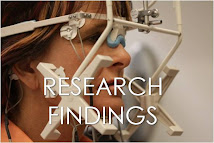When using the kineseographic K7 Scan 2 opening and closing jaw tracking tests it has been often recognized on both the sagittal and frontal tracings various cross-over patterns can occur. What is the significance and meaning of these patterns? Since many in the NM arena did not adequately record what a healthy finished bite really looked like, whether in a properly managed orthosis and or FM, we at Occlusion Connections would like to perform a study. This will be titled Project 3: "A Comparison Report of a Pathological Bite vs A Well Managed Optimized Bite Using Scan 2" (this can be either a orthotic case, FM case or finished NM orthodontic case).
It is recognized that it is possible that cross over patterns are dependent on to what NM trajectory the final bite/occlusion was finished to. The following are various techniques and methods that have been used in determining a neuromuscular bite:
- Optimized Bite
- Chan Bite
- Classical NM Bite
- TENS bite Some NM clinicians may not know how to take an "optimized bite" neither do they fully understand this particular Scan 4/5 protocol which when comparing differences between the optimized, Chan Scan and classical NM bites it can influence the affects on the condyle/disc and mandibular jaw opening and closing paths movements relative to the final bite position.
The following interpretations to the meaning of the cross-over patterns on Scan 2 or 13 in the sagittal views have been the predominate views over the past 13 years:
Cross over in upper third means –
- a) Cervical issues,
- b) the highest third were C 4-8 issues (Dr. Mazzocco theory)
- c) in the top 1/3 of your tracing is from tooth interference
Cross over in Middle third –
- a) Upper to middle back issues
- b) combinations of occlusal and cervical C 1-3 issues (Dr. Mazzocco theory)
- c) cervical cause C1-3
Cross over in Lower third –
- a) Lower back issues
- b) exclusively occlusal issues (Dr, Mazzocco theory)
- c) cervical C4-7
Other thoughts:
- a) crossover doesn't mean anything
- b) crossover is always not wanted and pathologic
- c) it might be ok.
ABSTRACT:
Clinicians and researchers in NM dentistry over the years have been wondering what the crossover patterns in mandibular movement means? Many hypothesis have been formulated but lack clinical proofs, since majority of theses Scans were performed under pathological position and hardly any were evaluated under through physiological health movement. Common sense tells us that “Opening paths and closing paths on the human shouldn’t be coincident as long as there is an articular disc and condyle that translates and rotates down and forward and back!”
Other facts that will influence this isotonic trajectory are:
- The condition of the condylar/disc health or unhealthy will also affect how the jaw track is displayed
- Influences by the existing bite/occlusion and muscle status
- Terminal tooth contact
- Postural influences
As of to day clinical studies have only shown various patterns of unhealthy, but what do healthy patterns look like?
PURPOSE:
The purpose of this research is to collect quality data of patients in an optimal bite position and posture and compare the before and after data.
METHOD OF DATA COLLECTION:
For the Project No. 3 On Line Forum Research we would need to ask the doctors for the following (minimally):
- Musculoskeletal Occlusal Signs and Symptoms Form on K7 filled out
- Scan 2 pre treatment
- Scan 13 pre treatment
- Scan 2 Post treatment (Scan 7 technically is the after TENS Scan 2)
- Scan 13 Post treatment
- Scan 4/5
- Pre treatment CO cheek retractor photo
- Post treatment CO photo (whether orthotic, FM, ortho)
- Dental/skeletal classification (class I, II, III)
- Where there C1/C2 adjustments done?



No comments:
Post a Comment